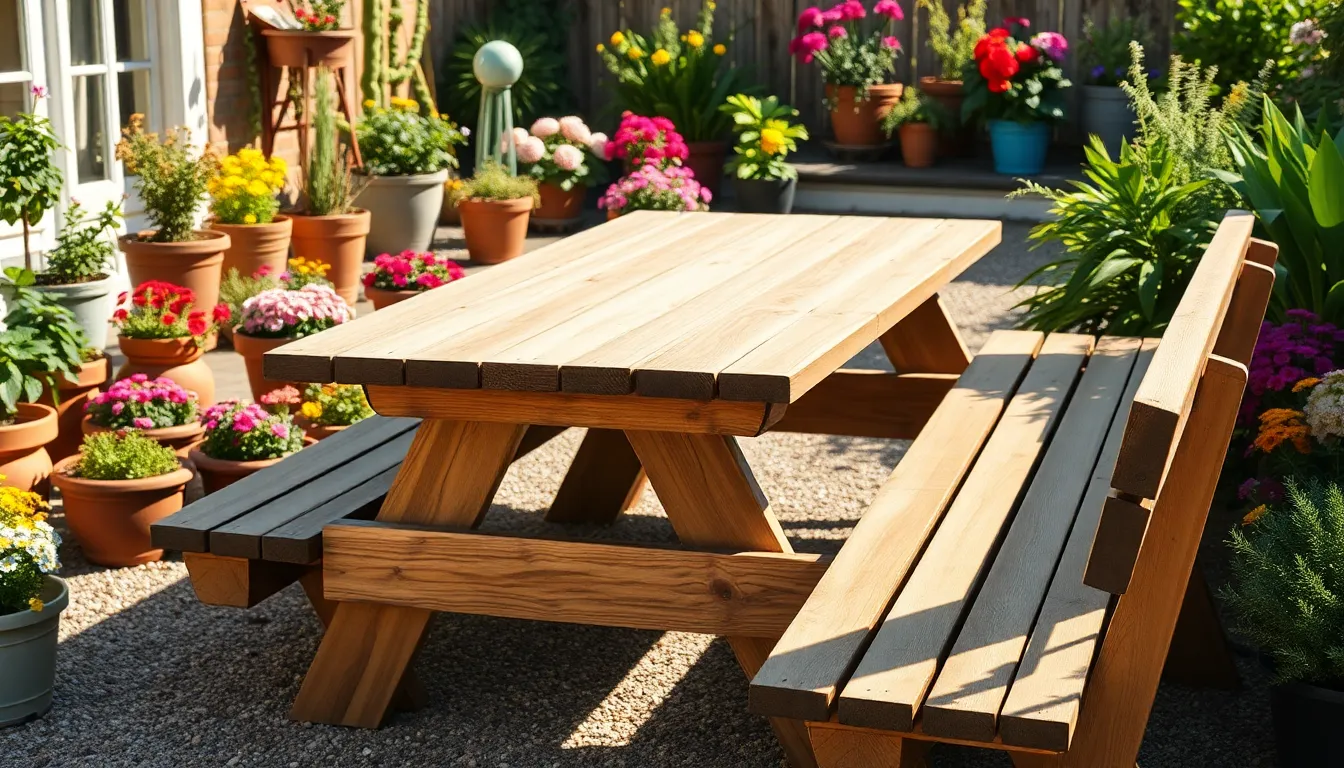Table of Contents
ToggleWoodworking isn’t just for the pros in flannel shirts; it’s for anyone who’s ever thought, “I could totally make that!” Whether it’s a rustic coffee table or a quirky birdhouse, DIY wood projects offer a chance to unleash creativity while impressing friends and family. With the right plans in hand, even the most novice woodworker can turn a pile of lumber into a masterpiece—or at least something that resembles one!
Benefits of DIY Wood Projects
DIY wood projects offer numerous advantages that appeal to various skill levels. Engaging in woodworking fosters creativity and satisfaction while providing practical benefits.
Cost-Effective Solutions
DIY wood projects present a budget-friendly alternative to purchasing furniture and decor. By sourcing materials from local suppliers or using reclaimed wood, individuals often save significant money. Building tables or shelves at home frequently costs a fraction compared to retail prices. Plus, people can choose simpler designs to further reduce expenses. Many online plans provide detailed instructions that eliminate the need for expensive tools and materials. Overall, crafting unique pieces allows individuals to achieve high-quality results without breaking the bank.
Customization Options
Personalization stands out as a key advantage of DIY wood projects. Makers can design items tailored to their specific needs and preferences. Individuals often find that existing furniture lacks the perfect size or color, making custom builds appealing. They can select wood type, finish, and dimensions, ensuring the final product matches their vision. Online plans offer a variety of styles, empowering crafters to experiment and modify designs. Overall, customization enhances satisfaction, creating one-of-a-kind pieces that reflect personal taste.
Popular DIY Wood Projects

DIY woodworking offers an array of exciting projects for all skill levels. The following categories showcase popular options.
Garden Furniture
Creating garden furniture elevates outdoor spaces. Benches, tables, and chairs serve both function and style. Wood projects like simple picnic tables allow for outdoor dining. Slatted benches can blend comfort with aesthetics. Often, using weather-resistant wood extends the life of these projects. Plans for these items are readily available online, guiding builders through each step.
Home Decor
Home decor projects foster creativity and personal expression. Items such as shelves, frames, and wall art add character to any room. Floating shelves provide practical storage while enhancing aesthetics. Picture frames crafted from reclaimed wood give a rustic charm. Several free plans exist for common decor projects, making them accessible for beginners. Customizing dimensions and finishes tailors each piece to individual tastes.
Essential Tools and Materials
Gathering the right tools and materials enhances the woodworking experience. The following list provides necessary equipment and types of wood for successful DIY projects.
Must-Have Tools
A circular saw stands as a key power tool, enabling clean cuts in various wood types. An electric drill assists in making precise holes and driving screws, adding efficiency to any task. Clamps are essential for securing pieces during assembly, ensuring stability and accuracy. A measuring tape measures dimensions accurately, preventing costly errors and promoting precision. Finally, a sanding block or orbit sander helps achieve a smooth finish, highlighting the wood’s natural beauty.
Types of Wood
Pine serves as a popular choice for beginners due to its affordability and ease of use. Oak, known for its durability, offers a stunning grain that enhances furniture quality. Maple provides resistance to wear and maintains a light color, making it suitable for various projects. If one prefers a rustic look, reclaimed wood presents unique textures and histories, enriching any creation. Finally, cedar is ideal for outdoor projects because of its natural resistance to moisture and insects, contributing longevity to garden furniture.
Step-by-Step Guide to Getting Started
Starting with DIY wood projects can be exciting. Understanding the steps involved helps clarify the process.
Choosing Your Project
Selecting a project aligns with skill level and interests. Beginners often prefer simple items like birdhouses or shelves due to their manageable nature. More experienced woodworkers may opt for larger undertakings, such as outdoor furniture or custom cabinetry. Considering the available space for the finished piece is essential, as is contemplating the functionality it will serve. Resources like free online plans offer guidance and inspiration, enabling choices that fit personal preferences and capabilities.
Understanding the Plans
Grasping the plans’ details enhances project success. Each plan generally includes a materials list, detailed measurements, and step-by-step instructions. Reading through all instructions before starting allows for a smooth workflow. Many plans incorporate diagrams, illustrating essential cuts and assembly techniques. Familiarity with woodworking terminology is valuable when navigating these instructions. Taking time to comprehend each section minimizes mistakes and improves outcomes. By understanding project plans, individuals can ensure they remain organized and focused throughout the woodworking experience.
Embracing DIY wood projects opens a world of creativity and personal expression. With the right plans and tools anyone can transform simple materials into stunning pieces that reflect their unique style. The satisfaction of crafting something from scratch is unmatched and can lead to a deeper appreciation for woodworking.
Whether it’s building garden furniture or creating home decor items each project offers an opportunity to learn and grow in skill. The ability to customize designs not only enhances the final product but also ensures it fits perfectly within any space.
So grab those tools and start crafting. The journey of woodworking is just as rewarding as the finished piece.





